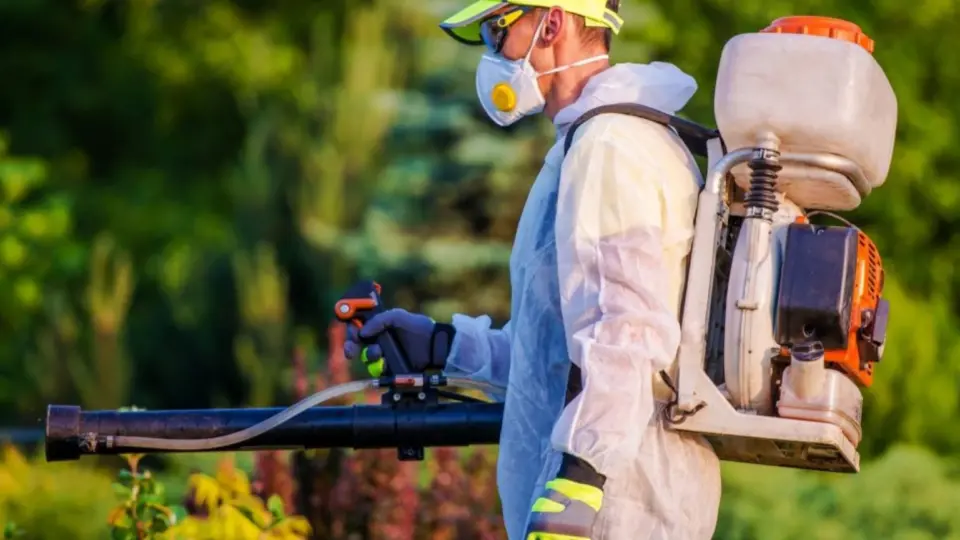
Ladybugs might look like tiny garden beauties, but they’re so much more than just a pretty sight! These colorful insects are natural pest control experts, feasting on aphids, mites, and other harmful pests that can damage your plants.
Instead of reaching for harmful chemicals, gardeners often welcome ladybugs to their gardens as a safe and eco-friendly way to keep the pest population in check. Beyond their gardening benefits, ladybugs are also a symbol of good luck in many cultures. So, the next time you spot one, remember—it’s not just a cute bug; it’s a hardworking little helper!
What benefits do ladybugs provide to gardens and plants?
Ladybugs offer several valuable benefits to gardens and plants, making them a natural and eco-friendly solution for pest control. Here’s how they help:
- Natural Pest Control: Ladybugs are voracious predators of common garden pests like aphids, mites, scale insects, and mealybugs. By feeding on these pests, they help reduce their populations without the need for chemical pesticides, making them an environmentally friendly option.
- Reduced Need for Chemicals: With ladybugs in your garden, you can reduce the use of harsh chemicals, promoting healthier soil and plants. This also helps protect beneficial insects and pollinators, such as bees.
- Improved Plant Health: By keeping pest populations in check, ladybugs help protect your plants from damage caused by overfeeding insects. This ensures healthier, more vibrant plants that can grow without the stress of pest infestations.
- Biodiversity Support: Ladybugs contribute to a balanced ecosystem in your garden by providing food for other wildlife and helping maintain a natural pest population control cycle.
- Easy to Attract: Attracting ladybugs to your garden is a simple process. Plant nectar-rich flowers, such as daisies and sunflowers, and refrain from using pesticides to create a welcoming environment for these beneficial insects.
With ladybugs on the job, your garden becomes a healthier, more sustainable space to enjoy!
How do ladybugs contribute to natural pest control?
Ladybugs are fantastic contributors to natural pest control, thanks to their voracious appetite for certain garden pests. Here’s how they help:
- Feeding on Aphids: Ladybugs are particularly effective at controlling aphids, one of the most common and damaging pests in gardens. A single ladybug can consume up to 50 aphids in a day, helping to keep their population in check and preventing them from damaging plants.
- Consuming Other Pests: In addition to aphids, ladybugs also feed on other harmful insects, such as mites, scale insects, mealybugs, and whiteflies, all of which can weaken plants by feeding on their sap and causing disease.
- Reducing the Need for Pesticides: By naturally managing pest populations, ladybugs reduce the need for chemical pesticides. This makes them an eco-friendly alternative that helps preserve beneficial insects, such as bees and butterflies and protects the overall health of the garden ecosystem.
- Supporting Biodiversity: Ladybugs help maintain a balanced ecosystem by controlling pest populations without disrupting the natural food chain. Their presence encourages a healthy, thriving garden with fewer pests and a better chance for plants to grow strong and healthy.
By introducing ladybugs into your garden, you’re harnessing nature’s pest control and promoting a healthier, more sustainable environment for your plants.
Why are ladybugs considered a symbol of good luck in many cultures?
Ladybugs are considered symbols of good luck in many cultures due to their positive impact on agriculture and their cheerful, colorful appearance. Here’s why they’re associated with luck:
- Pest Control: In ancient times, ladybugs were recognized for their ability to protect crops by consuming harmful pests, such as aphids. Farmers saw them as a sign of a bountiful harvest and good fortune for the crops, associating their presence with prosperity and abundance.
- Short Life Cycle: The quick transformation from larvae to adult ladybugs also symbolizes renewal and change. In many cultures, this transformation is regarded as a positive omen for new beginnings and growth, making ladybugs a symbol of change.
- Bright, Cheerful Appearance: With their bright red bodies and black spots, ladybugs evoke feelings of happiness and joy. Their presence is often associated with a sense of well-being, and in some cultures, a ladybug landing on someone is believed to bring happiness, love, or financial gain.
- Folklore and Tradition: Across Europe and Asia, ladybugs have been tied to ancient beliefs and superstitions. For example, in some European cultures, it’s believed that if a ladybug lands on you, it will bring good luck or grant you a wish.
In essence, ladybugs have long been seen as nature’s lucky charm, bringing positive energy, prosperity, and good fortune wherever they appear.
What is the lifecycle of a ladybug, and how do they reproduce?
The lifecycle of a ladybug is a fascinating process that involves several stages, from egg to adult, with unique features at each step. Here’s how it unfolds:
- Egg Stage: The lifecycle begins when a female ladybug lays eggs on the underside of leaves, typically near a colony of aphids or other pests, as these will serve as the food source for the larvae. The eggs are typically yellow or orange and hatch in about 3 to 7 days.
- Larval Stage: Once the eggs hatch, ladybug larvae emerge. These larvae appear quite different from the adult ladybugs; they are long, segmented, and dark-colored, with distinct spots. During this stage, which lasts approximately 2 to 3 weeks, the larvae are voracious eaters, feeding on aphids, mites, and other small pests to accumulate energy for the next phase of development.
- Pupal Stage: After the larval stage, the ladybug enters the pupal stage. The larvae attach themselves to a surface, and within a few days, they form a hard shell-like casing around themselves. Inside the pupa, the ladybug undergoes a metamorphosis, developing into an adult.
- Adult Stage: After about 7 to 14 days, the adult ladybug emerges from the pupal casing. The adult ladybug initially has soft, pale wings that gradually harden and take on the familiar red or orange color with black spots. Adult ladybugs can live for several months and are capable of reproducing during the warmer months of the year.
Reproduction:
- Mating: Ladybugs reproduce in the spring. After reaching maturity, adult ladybugs mate, usually shortly after emerging from the pupa stage. The female lays eggs in areas abundant with food sources, ensuring her offspring will have enough to eat once they hatch.
- Multiple Generations: Ladybugs can produce several generations in a single year, depending on environmental conditions, with each generation following the same lifecycle stages. Reproduction and the larvae’s quick consumption of pests make ladybugs important natural pest controllers in gardens and fields.
Their lifecycle and reproductive habits are key reasons why ladybugs are such effective allies in controlling pests!
Discover How Ladybugs Benefit Your Garden Beyond Beauty!
These colorful insects are natural pest control experts, helping you manage garden pests like aphids, mites, and mealybugs without the need for harmful chemicals.
By introducing ladybugs into your garden, you can improve plant health, reduce the risk of pest damage, and enjoy a more eco-friendly approach to pest management. Plus, their presence promotes biodiversity and supports a healthy ecosystem.
Ready to enhance your garden’s health with nature’s little helpers? Contact Freedom Pest Services today and learn more about ladybug-assisted pest control!
